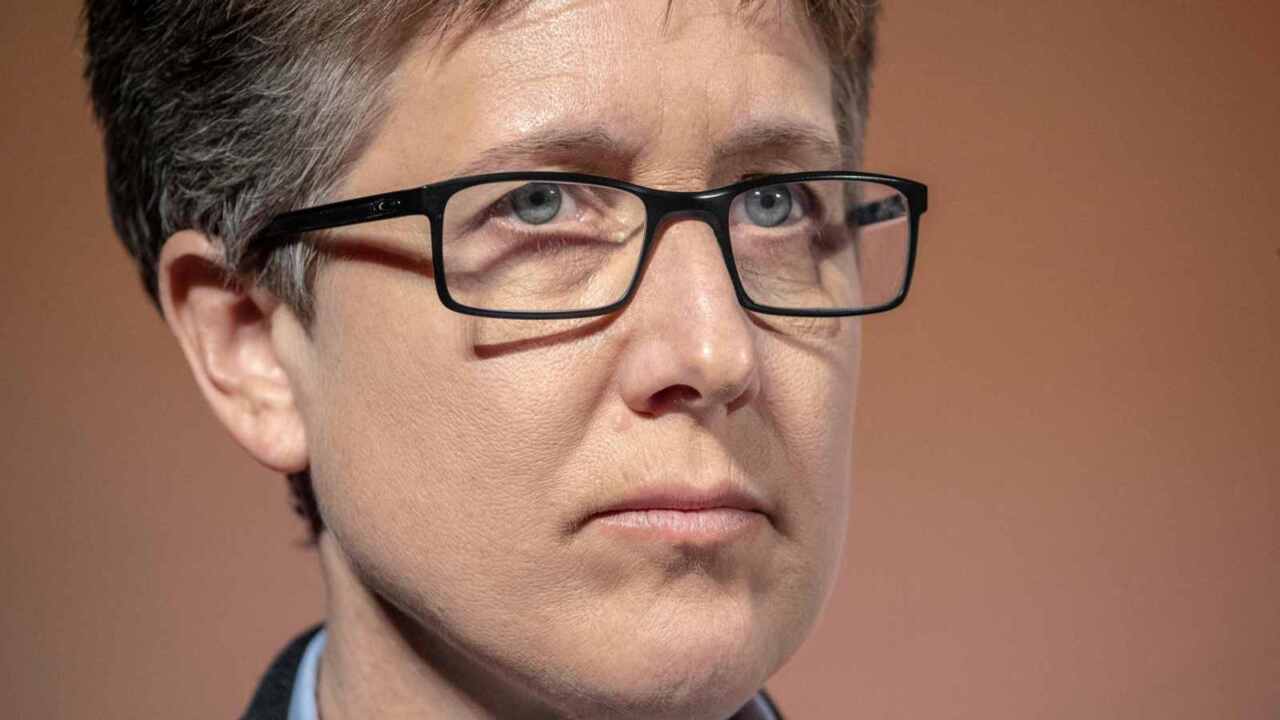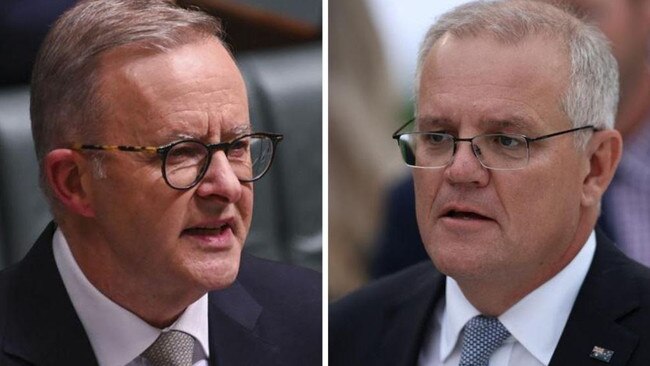How millions of Aussies have taken a pay cut without even realising
The cost of living is skyrocketing – but what many Aussie workers may not realise is that their income has actually gone backwards.

Costs
Don't miss out on the headlines from Costs. Followed categories will be added to My News.
We all know the cost of living is through the roof these days – but it may come as a surprise for countless workers to realise their incomes have actually technically decreased over time.
That’s because wages have failed to keep up with skyrocketing inflation, which means millions of us are actually worse off at the moment, even if our pay packets have modestly increased over the years.
Deloitte Access Economics partner Chris Richardson told news.com.au wages were the key to understanding what was next for inflation and interest rates.
“Wages, prices and interest rates are the three amigos – they move together and ultimately it’s wages that drive the other two,” he said.
“Over the past decade and a bit in Australia and around the world, wage growth has weakened, so inflation has weakened and interest rates have gone down.
“It was bad economic news because of weak wage growth, but good economic news because of lower interest rates.
“Now we’re going into the next phase … wage growth and prices and interest rates are going up, which is good news for wages and bad for interest rates.”
But according to Mr Richardson, things have not gone according to the script, because it has been the cost of things not directly impacted by wages – such as petrol and shipping – that have jumped so significantly, as a result of Covid and Russia’s invasion of Ukraine, and the uncertainty those factors have caused.
The pandemic has also caused demand for some items to soar while others have plummeted.
“It’s a crazy situation that we’re in, so inflation jumped before wages jumped,” Mr Richardson explained.
“What’s hard for people to get is that this is a temporary phase. You don’t get ongoing inflation from stuff that’s not wages – ultimately you need wages to be the driver.”
He said things would “have to keep getting sillier” – such as new wars in oil and food producing regions – in order for things to continue on the current trajectory.
“There tends to be too much fear about what happens next with inflation,” he said.
He added Treasury estimates predicted inflation would drop away from the current peak as oil prices and shipping costs ease down.

Australia’s ‘stunning’ trend
Meanwhile, Mr Richardson pointed out a “stunning” new trend in Australia.
“Take a walk past pretty much any shop in Australia at the moment and you’ll see ‘help wanted’ signs. We know the unemployment rate is officially within reach of a half-century low, and we know that vacancies are stunning in Australia at around 400,000,” he said.
“We’ve got employers absolutely scrambling for workers, and that gives workers more power than they have had in a very, very long time, so wage growth will pick up, and it already has.
“But it has picked up at one of the slowest rates we’ve ever seen, below inflation, and even with inflation falling, it will take time for wage growth to accelerate further, partly because we’re different than other parts of the world, with wages set in a legalistic way with big agreements that cover from two to four years, national wage cases and award systems.
“Wage growth in Australia is a supertanker – it turns slowly, and it is improving, but not roaring up. And it won’t roar up, it will continue to steadily improve for quite some time.”
A perfect example of the broader Australian situation can be seen in Western Australia.
“WA can rightly claim to be one of the strongest economies in the world; it’s done very well against Covid, it sells stuff the world wants like iron ore and gas, and that massive commodity boom has had an impact, and yet wage growth in WA last year in the private sector was 2.1 per cent, and that’s below the national average. So it’s a long way to accelerate from where we are,” Mr Richardson said.
“We’ve had the best news in half a century in jobs, but it will be a while before it’s properly reflected in wages.
“And what’s good news for jobs is good news for a handful of people, because many people are happy enough in the job they’re in, and lots aren’t looking … so the proportion of adults getting jobs is quite small.
“It’s a genuinely marvellous story … but the good news is only good for a handful, while wages and what happens with them is what’s important for pretty much everyone, and there’s still bad news for prices.”
How you took a pay cut and didn’t realise
By now many of us are painfully aware that inflation is soaring while wages have stagnated – but what many of us may not have realised, is that it means millions of workers have effectively had a pay cut as a result, with the cost of living outstripping the amount of cash in our accounts.
But according to Mr Richardson, there’s now a golden opportunity to change that.
“It’s the same with mortgage rates and how much you pay for internet – now and then, you get a better deal if you rattle the cage, and go to the bank or your internet service provider and ask them if they can do any better,” he said.

“Globally we’re talking about ‘the Great Resignation’, but in Australia, we’re still the ‘Great Rusted On’.
“Job mobility in Australia has been falling for a long time … we’re staying in our jobs for longer and that comes at a cost.
“If we love the one we’re with it’s marvellous, but we’re not exploring all our options and only now are Australians really starting to look at job advertisements.
“That’s one part of the improvement in wages, we’re starting to see people taking new jobs with pay rises, or asking their existing employers what they can do.”
Is the budget one big lie?
For decades, governments, the Reserve Bank and economic experts have been guided by the Non-Accelerating Inflation Rate of Unemployment (NAIRU) theory.
In a nutshell, the NAIRU is the lowest unemployment rate that can exist without causing wages and therefore inflation to skyrocket, and for a long time, the RBA has assumed that rate was 5 per cent.
But the seasonally adjusted unemployment rate fell to 4 per cent in February, the lowest since August 2008, according to the Australian Bureau of Statistics, and wages haven’t grown, nor have inflationary pressures eased as many expected.
That has caused some to fear that old model is dead, and that the budget might therefore be based on a lie.
But according to Mr Richardson, the theory is not broken – the NAIRU has simply shifted.
“I wouldn’t say it’s not working … we just don’t know what that unemployment rate is,” he said.

“It took a long time for people to realise, hang on, it’s not working anymore, it has shifted, and we don’t know the reasons – it might be because of technology, or the gig economy or all kinds of things.
“But now that we’ve driven unemployment lower than before, it will make wages grow … Treasury previously thought (a rate of) 4.75 would do the trick, then it fell below that and they changed to 4.25.
“Unemployment would be below 4 per cent at the moment and wage growth is going up, so it’s not broken.
“The Reserve Bank has wondered aloud whether the rate should be 3-point-something, and that’s at the heart of some pretty important issues.”
Mr Richardson said the RBA has warned that it will take a while before wage growth takes off.
“The Reserve Bank needs to fulfil its promise to get inflation to 2 to 3 per cent … the Reserve Bank didn’t get inflation high enough for long enough, and it really wants to find out where the unemployment rate is that drives wage growth up in Australia, because ultimately we need higher wage growth to get that promise fulfilled,” he said.
Originally published as How millions of Aussies have taken a pay cut without even realising





